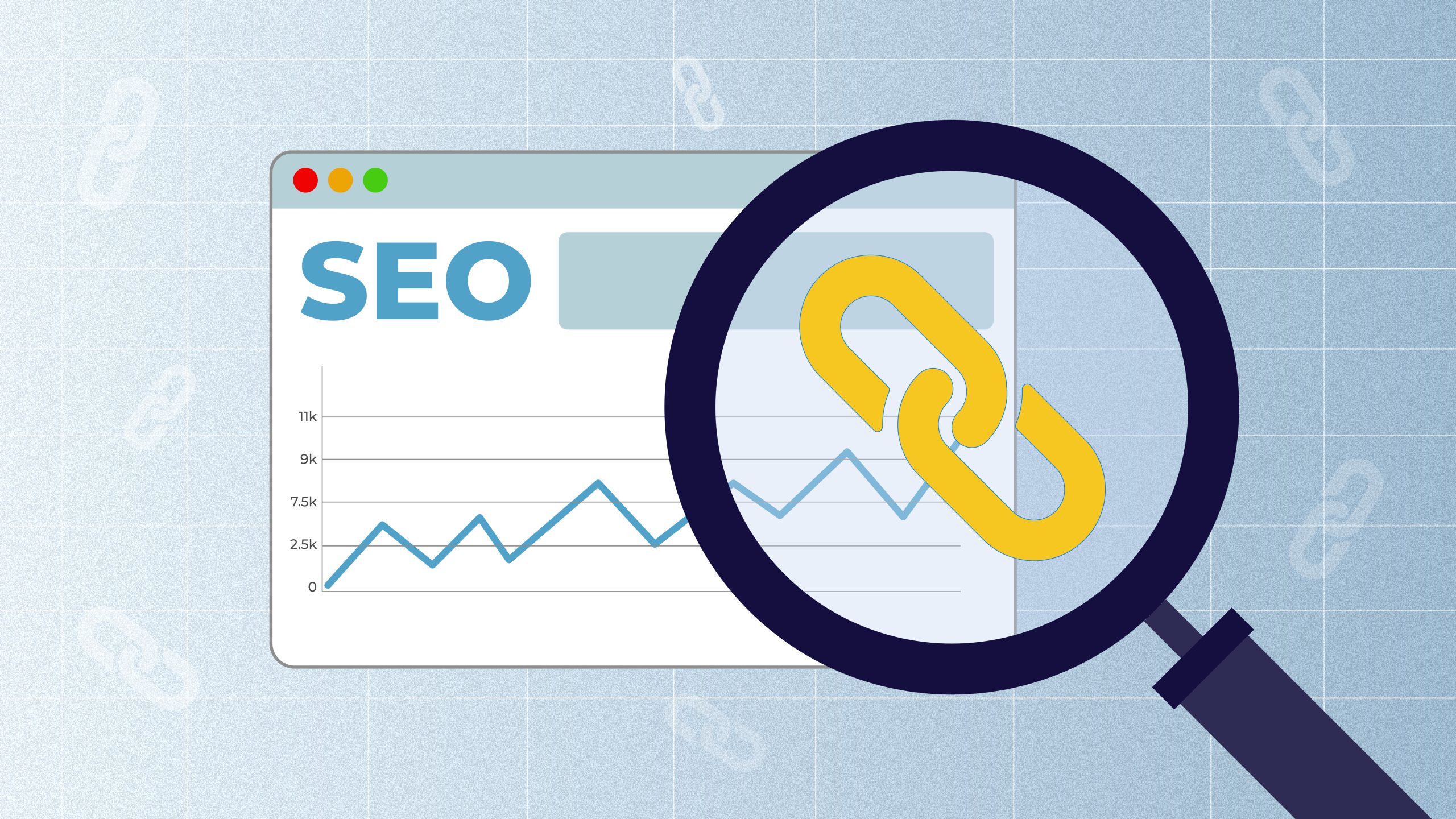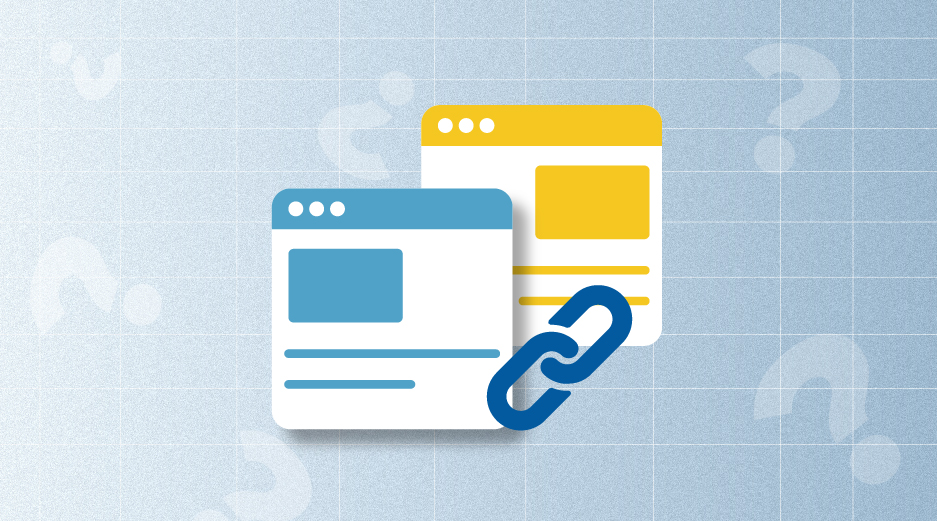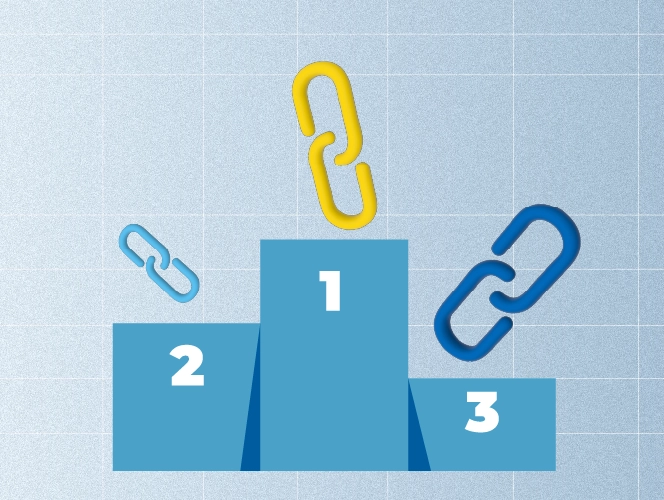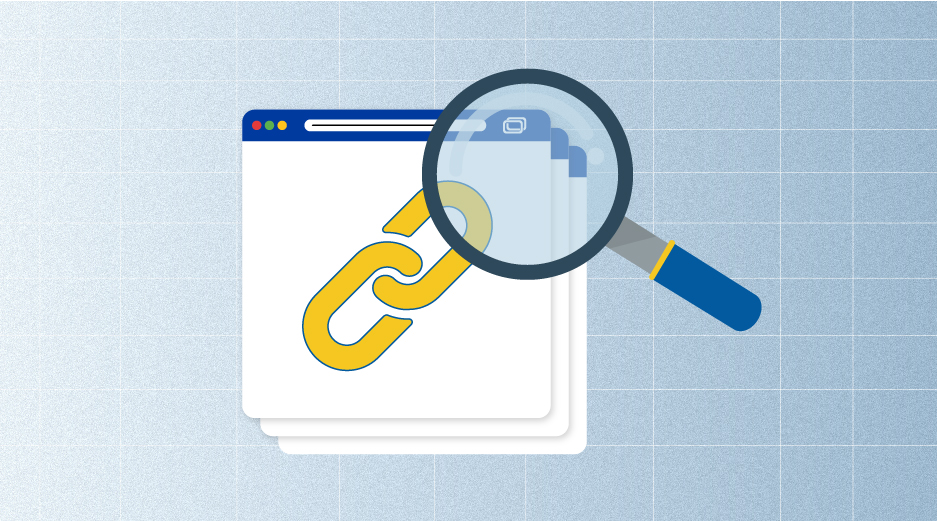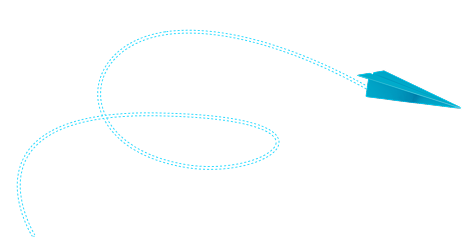Answer honestly: do you regularly do health check-ups or postpone them for another time? If the answer is the first one, there is a chance that your health is in quite good condition.
You want the same for your website, right? So, to improve your website’s health, you need to conduct a backlink analysis. Remember, analyzing backlink profiles helps identify issues and finds growth opportunities for creating successful link-building campaigns.
Don’t just take our word. Remember that backlinks are one of Google’s most important ranking factors, so you need to ensure that your backlink profile is as strong as Thor or Hulk’s.
So keep reading till the end to learn the definition of backlink analysis, its benefits, and best practices for analyzing your backlink profile.
What is a backlink analysis?
Before anything else, let’s define what backlink analysis is anyway.
Backlink analysis is the process of analyzing your backlinks with the help of different tools to understand the credibility, relevance, and overall health of your backlink profile.
The goal of this approach is to get data into your website’s health and also find insights on how to make your backlink profile stronger. With the help of analyzing your backlinks, you can refine your link building strategies and enhance your overall website SEO performance.
Remember that search engines consider links as a sign of your site’s authority, which highlights even the importance of backlinks for improving search engine rankings. So, let’s move on and discuss why you should care about backlink analysis.
Why should you do a backlink analysis?
Well, the list of advantages of backlink analysis can be quite long, but let’s discuss the most important ones that emphasize the significance of analyzing your backlink profile.
Discover new arenas
When you check backlinks that point to your website, it helps you discover new link prospecting opportunities and strategies.
You can find broken backlinks, or brand mentions on reputable websites, then reach out to them with the help of outreach tools and gain new valuable backlinks. Plus, you can identify what your web pages are linkable assets and focus on creating more of this content to attract backlinks naturally.
Outrank your competitors
With the help of backlink analysis, you can outperform your competitors by building a successful and winning backlink profile. In this phase, you compare your backlink profile with your competitors to find out what you’re doing well and where you might need to improve.
Maximizing efforts in your strengths and addressing your weaknesses will help you make your backlink profile better and stronger.
Make your backlink profile healthy and trustworthy
One of the main goals of backlink profile analysis is to detect and remove spammy or toxic links that not only don’t add any value to your backlink profile but can even harm the website’s reputation. Learning about different types of backlinks can help you identify which links contribute positively to your SEO efforts and which ones could potentially harm your website’s reputation. By solving issues before they can cause real damage, you can guarantee the strong health of the backlink profile.
Improve your content strategy
Analyzing your backlinks gives insights into what types of content bring more backlinks. Having this information on your hands, you can improve content strategy and create more link-worthy content.
Ultimately, thanks to well-planned backlink analysis, you will maximize your link-building efforts and search engine rankings as well.
What are the main components of backlink analysis?
In this stage, let’s talk about the main factors of tracking your backlinks and what kind of metrics you should pay attention to.
Complete backlink number
The first step of doing backlink competitive analysis is finding the total number of your referring domains and referring pages as well. Understanding the difference between referring domains vs backlinks can offer deeper insight into the quality and diversity of your link profile.
Unique domains
Here, you can check unique domains to find out how diverse and strong your backlink profile is.
Do follow vs. no follow
In the next step of backlink monitoring, you can find both do follow and no follow links, as both of them carry importance in enhancing the credibility of your backlink profile.
What is important to know is that do follow has the power to boost your website’s SEO rankings. On the other hand, making backlinks no follow means giving a signal to search engines to ignore and not consider them. So, no follow links don’t add value to SEO ranking, but they will make your backlink profile diverse and natural. Interesting research shows that 10.6% of all backlinks to the top 110,000 sites are marked as no follow.
Ahrefs can be helpful in this process, as by entering your Ahrefs account and inserting the domain URL in the Overview section, you can check the percentage of no follow and do follow backlinks. In this particular case, the website has more than 70% of do followed, and almost 30% no followed backlinks.
If you’re unsure of what is Ahrefs or how to use it for backlink analysis, check out our guide.

Credibility and authority of websites
Backlinks from credible and authoritative websites are signs of trustworthiness for search engines, so you should check what kind of websites you have backlinks from.
Relevance
In the next stage, check whether your backlinks are from websites that are contextually relevant to your content. Remember, search engines value relevance and prioritize websites that deliver relevant and unique content.
Anchor texts
Don’t hesitate to check anchor texts to ensure they are based on effective primary keywords, are relevant to your content, and seem natural. Also, pay attention to the fact that anchor texts provide context to search engines about the content of the linked page.
Competitor backlink analysis
Analyzing the backlink profiles of competitors can help identify backlink gaps and find new opportunities for making backlink profiles stronger.
Toxic and spam links
You shouldn’t miss the step of finding and cleaning toxic or spammy backlinks, ensuring backlink profiles’ health. Don’t know what these are? Our SEO glossary will help you learn all those terms.
With all these factors in mind, you may consider when it’s best to audit your backlink profile and how to be prepared.
So, let’s speak about it.
When is the best time to do a backlink analysis, and how do you plan it?
Ok, now you know how important backlink analysis is and what components you should keep an eye on when analyzing your backlinks. So let’s discuss when you need to dedicate effort to it.
Periodically, for sure
Measure the impact of your link building strategies regularly.
Before and after link building campaigns
You prepared a new link building strategy; you need to conduct a backlink analysis to find out your starting point where you are at that moment and after the campaign is running for a while to measure its effectiveness.
Sudden drop in rankings
Yes, unfortunately, there can be situations when your website metrics drop. So, you need to analyze your backlink profile to identify potential issues and help you turn things around.
On every occasion you have to do backlink analysis, you should be prepared. Start by setting clear goals that will be your guidepost during this process.
In the next stage, decide what metrics you need to examine: it can be the number of backlinks, anchor text diversity, and more. Lastly, ensure you have all the necessary tools that will give you relevant data and help you refine your link building strategies.
Ok, you are also prepared to check your backlink profile; now let’s discuss which effective steps you should take.
How to do a backlink profile analysis?
Let’s face it: even the most beneficial strategy won’t work if you don’t know how to implement it effectively. So, let’s discuss effective approaches for backlink competitive analysis together.
Analyze the total backlinks linking to your site
First and foremost, examine the overall number of backlinks that you bring to your website. The reason is obvious: you should compare this number for backlinks with competitors to find out overall authority.
What is interesting to note is that statistics show that pages with the highest number of total backlinks usually rank high in Google. So, in this stage, you need to discover a broader picture of your website’s online reputation.
Typically, having a large number of backlinks shows that other websites consider your content valuable and link-worthy.
To check the total number of backlinks, you can enter your Ahrefs account, enter your domain in the Overview section, and see the total number of backlinks, which in the case of this website is 12.2K.

Segment unique domains
In the next step, you go beyond the total number of backlinks. Instead, you should understand whether those links are from different websites and segment them based on unique domains. The reason is that Google and other search engines love diversity. On the other hand, too many backlinks can be a sign to them that your website is following manipulative tactics.
So, you should ensure backlinks that point to your website are from various authoritative and credible websites. For that, you need to use the help of Ahrefs, and in the same way you check total backlinks, you can find out the number of referring domains.

Check domain rating (DR) for high-quality backlinks
We mentioned that having a big number of backlinks is generally a sign of your credibility. However, the credibility of those backlinks is even more important, and valuable backlinks from reputable websites will improve the website’s authority and boost rankings as well.
In this stage, instead of focusing on quantity, you need to check the authority of websites that you have backlinks.
Let’s check via Ahrefs: In this particular case, 11% of backlinks are websites with 50-49 DR, which is quite a good case. But it’s important to note that 35% of backlinks are from websites with 0-9DR, so website owners should find out the reasons behind it and solve the issue. In some cases, they need to disavow these links with low DR.

Check the quality of anchor texts
The next step in your backlink profile analysis process is to identify the anchor text of backlinks. You better not miss this step, as anchor text plays a crucial role in providing context to users and search engines about the linked content. Effective anchor text optimization ensures that links appear natural, relevant, and beneficial for both SEO and user experience.
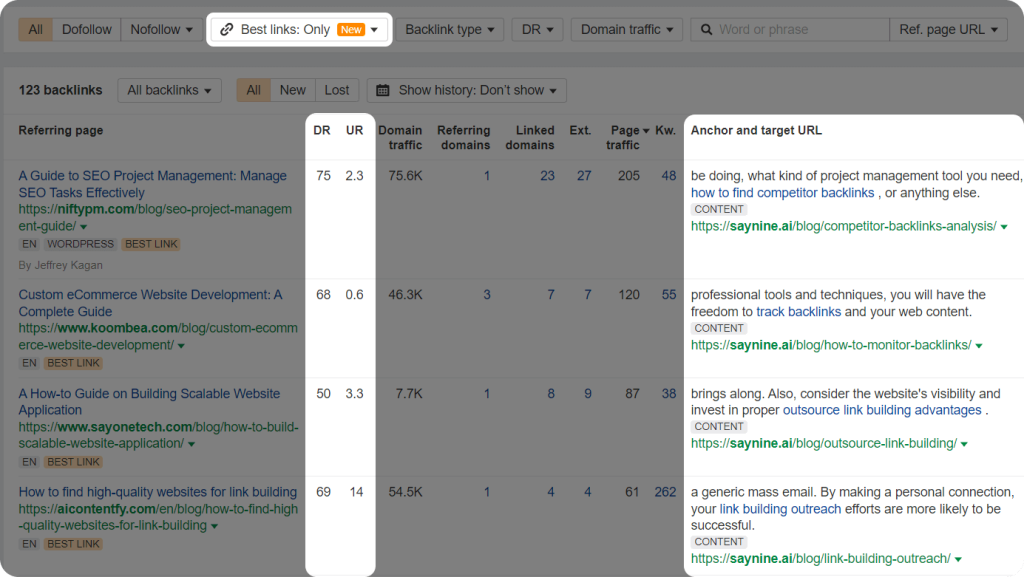
When examining your backlinks, check the words or phrases used in the anchor text. Ideally, linking sites would use your target keywords as anchor text, giving clear signals to search engines about content relevance.
Step 1: Log in to your Ahrefs account.
Step 2: Navigate to the “Overview” section and enter your domain name.
Step 3: Access the “Backlinks” section.
Step 4: Utilize the “Best links” feature, an innovative aspect of Ahrefs.
Step 5: Pay attention to the “Show best links only” or “Exclude best links only” options for refining results.
Step 6: Focus on the DR,URL rating (UR) and anchor text
So, let’s discuss how your anchor text should be. First, ensure that it is relevant to the linked content. Plus remember, anchor texts should be keyword-rich, but they also should naturally fit into the content. Without a doubt, you should avoid including generic phrases like “Click here” or “Read more” in your anchor text. Understanding different types of anchor text can help you choose the most effective and natural options for your links.
Find broken backlinks
You don’t need links that don’t add any value to your backlink profile, right? So, when doing a backlinks check, you should find broken ones. These are links that direct readers to your web page that doesn’t exist, so they typically come across as 404 error text.
Broken links can make your website seem less trustworthy. So, you need to regularly check your backlinks to find broken ones. Ahrefs can be extremely helpful in this process. Once you identify them, knowing how to fix broken links will allow you to restore your site’s integrity and prevent any negative impact on your SEO.
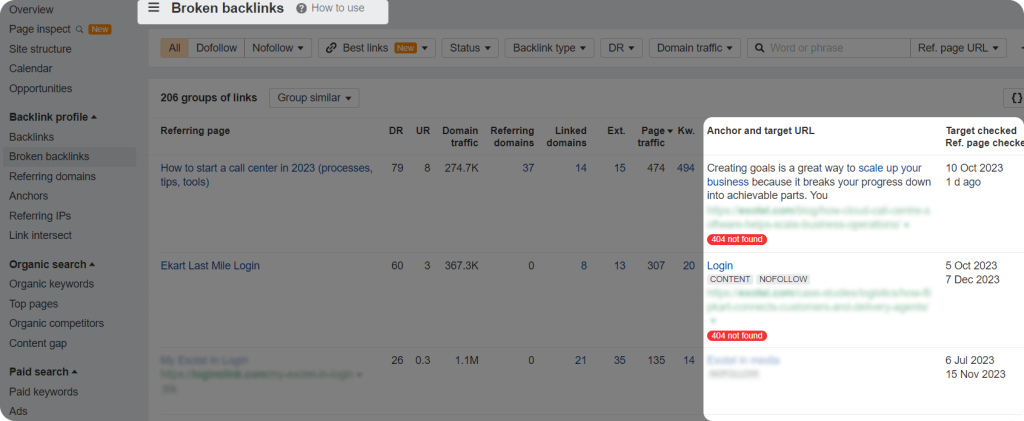
Later fixing these broken links, you’re boosting your website’s visibility but also making sure website visitors have a smoother and more reliable experience.
Discover spam links
There is no way you want to harm your website’s reputation and visibility, so better stay away from spam links as much as possible. These low-quality links try to artificially boost websites’ search engine rankings but instead can lead to penalties from search engines.
So, it’s quite important to regularly monitor your link profile and disavow spammy links. This way, you will maintain a healthy and credible online presence.
Poor-quality links from irrelevant sources, link farms, and comment spam can damage your website’s online reputation because it is associated with spammy websites. When you outsource backlinks, it’s especially important to ensure that the backlinks are from reputable sources. This minimizes the risk of acquiring spammy links, which can negatively affect your site’s reputation and search engine rankings.
Analyze your competitors’ backlink profiles
Ok, your goal is to help your company win the competition and outperform your competitors. Well, doing competitor backlink analysis gives you a chance to reach this goal.
First, you can find the main competitors and qualify all of their backlinks to define the backlink gap. This gives an amazing opportunity to find new backlinking opportunities.
Another tactic is finding competitors’ broken links and suggesting to these domains that they replace those links with yours.
Additionally, try to find guest posting opportunities when doing competitor backlink analysis to establish authority and build quality backlinks from reputable websites. You need to find websites where your competitors have guest posts and you don’t, so suggest a guest blog collaboration to these websites.
Lastly, don’t forget to conduct a content gap analysis. This process starts by finding topics your competitor’s websites cover, but you aren’t, but it is quite engaging for their readers. So, you can invest effort into creating fresh and valuable content that will eventually attract backlinks.
Discover and try to reclaim lost backlinks
You don’t want to lose any opportunity to make your backlink profile better, so if you have backlinks that later have been removed or deleted.
Well, but you are not lost on an uninhabited island, right? So you can reach out to those website editors and reclaim your backlinks.
But how to find your lost backlinks? Ahrefs gives a solution to this question as well. So to find lost backlinks, follow these steps:
Step 1: Enter your domain in the overview section of Ahrefs.
Step 2: Click on the “Backlinks” tab to explore your existing backlinks.
Step 3: Navigate to the “Lost” section to find your lost backlinks.
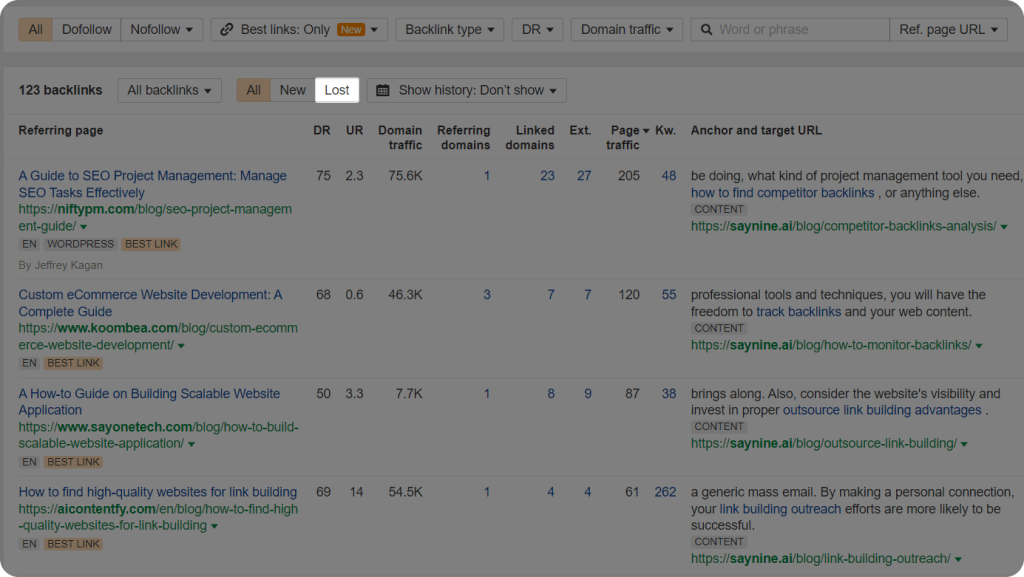
After having data about lost backlinks, you can proactively reach out to website editors to reclaim them.
Backlink analysis is done! What’s next?
Ok, you did a hard job and successfully conducted a backlink analysis, but what’s next? We suggest steps that you should follow after monitoring your backlink profile.
Create more link-worthy content
Certain types of content are more likely to generate links. Original research and unique, informative articles tend to attract more backlinks than informational content. When you know the type of content that attracts links, one of the important link building tips you can follow is creating similar content to generate more backlinks.
Additionally, keep an eye on keyword density within your content to make it better for both readers and search engines.
Get rid of toxic or irrelevant links
This is an issue because these links don’t pass on authority to any particular page on your website. On the other hand, building good backlinks will help get the link juice, improving your website performance.
Identify areas for improvement in the backlink profile
Let’s imagine a situation when you are doing a health check-up; your goal is not only to detect health conditions but to improve your overall well being. The same goes for analyzing your backlinks, as it should put you on a path to make your backlink profile as stronger as possible.
Don’t do these when doing backlink analysis!
Backlink analysis is a crucial aspect of SEO, but there are several common mistakes that people may make. Here are some of them that you should avoid:
Ignoring link quality
Prioritize high-quality backlinks from authoritative and relevant sources. Low-quality or spammy backlinks can harm your site’s SEO.
Remember, one of the most important link building skills is the ability to cultivate genuine relationships with reputable websites, fostering the creation of valuable and impactful connections.
Not checking link relevance
Ensure that backlinks come from sites that are contextually relevant to your content. Relevant links have more value in the eyes of search engines.
Ignoring anchor text diversity
Using the same anchor text for all backlinks is not the right thing to do. So, you need to ensure your anchor texts are natural and varied. This is a sign of credibility for search engines, as different types of anchor text help create a more organic and balanced link profile.
Not monitoring changes over time
Remember backlink analysis should be an ongoing process. Not regularly analyzing your backlink profile will be a huge mistake. So, monitor changes in your backlink profile over time to get new information about your SEO performance and make the necessary steps. You can implement a timeline maker to visualize your backlink profile’s evolution and track what you want to achieve with it in the long run.
Not considering user experience
Focusing solely on SEO metrics and not considering the user experience won’t be a smart move. Remember that backlinks from sites that deliver better user experience can bring long lasting value.
To Conclude
Here’s a quick overview of what we’ve covered:
- Backlink analysis involves examining backlinks to assess credibility, relevance, and the overall health of a backlink profile.
- Analyzing backlink profiles has several benefits, including discovering new opportunities, outranking competitors, and improving overall content strategy.
- You need to conduct a backlink analysis regularly to ensure your website performs well and gains a competitive advantage.
- Avoid common mistakes such as ignoring link quality, not maintaining anchor text diversity, and not considering user experience alongside SEO metrics.
- When analyzing backlinks, pay attention to the total number of backlinks, their relevancy, quality, how many unique domains there are, whether these backlinks are followed, and more.
Stay tuned for more fresh and insightful articles!
FAQ about backlink analysis
What are the components of a healthy link profile?
The main components of a good backlink profile is having brackinks from reputable websites with high DR and 1000+ traffic, 200 response code URLs, keyword rich and natural anchor text.
Why do you need to segment unique domains?
You need to segment unique domains to see where your backlinks come from and check if they are from diverse websites. This helps ensure your links are valuable and you have a natural backlink profile.
Why do you need to check the do follow and no follow backlinks?
You need to check do follow and no follow links when analyzing your backlink profile to ensure SEO strategy and evaluate website credibility.
How do you choose a backlink analysis tool?
To choose a backlink analysis tool, check if it has a big and up-to-date database, the necessary features to make informed decisions, and whether it fits your budget.
Quiz Time
Let's put your knowledge to the test.
Leave your email below to get a SayNine certificate!
Are you sure?


